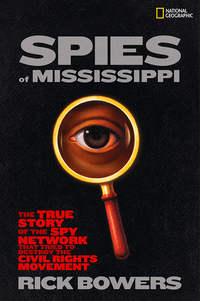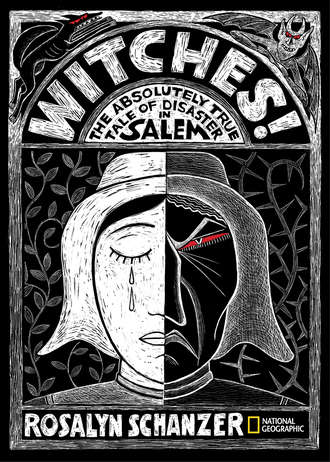
Полная версия
Witches: The Absolutely True Tale of Disaster in Salem

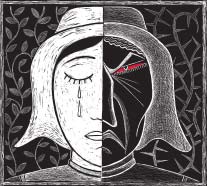
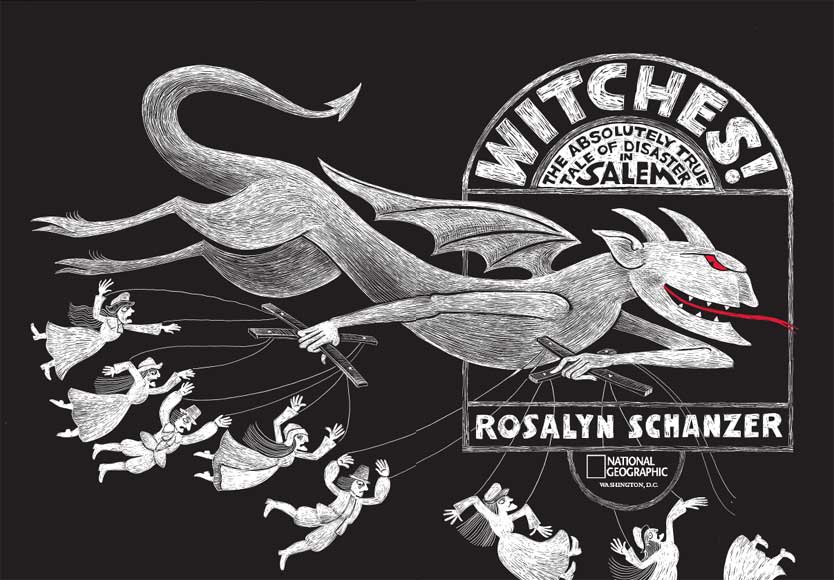
WITCHES!
THE ABSOLUTELY TRUE TALE OF DISASTER IN SALEM
ROSALYN SCHANZER

Copyright © 2011 Rosalyn Schanzer.
Published by the National Geographic Society. All rights reserved. Reproduction of the whole or any part of the contents without written permission from the publisher is prohibited.

The National Geographic Society is one of the world’s largest nonprofit scientific and educational organizations. Founded in 1888 to “increase and diffuse geographic knowledge,” the Society works to inspire people to care about the planet. National Geographic reflects the world through its magazines, television programs, films, music and radio, books, DVDs, maps, exhibitions, live events, school publishing programs, interactive media and merchandise. National Geographic magazine, the Society’s official journal, published in English and 33 local-language editions, is read by more than 38 million people each month. The National Geographic Channel reaches 320 million households in 34 languages in 166 countries. National Geographic Digital Media receives more than 15 million visitors a month. National Geographic has funded more than 9,400 wscientific research, conservation and exploration projects and supports an education program promoting geography literacy. For more information, visit nationalgeographic.com.
For more information, please call 1-800-NGS LINE (647-5463) or write to the following address:
National Geographic Society, 1145 17th Street N.W., Washington, D.C. 20036-4688 U.S.A.
Visit us online at www.nationalgeographic.com/books For librarians and teachers: www.ngchildrensbooks.org More for kids from National Geographic: kids.nationalgeographic.com
For rights or permissions inquiries, please contact
National Geographic Books Subsidiary Rights: ngbookrights@ngs.org
Library of Congress Cataloging-in-Publication Data
Schanzer, Rosalyn.
Witches!: the absolutely true tale of disaster in Salem / by Roaslyn Schanzer.
p. cm.
Includes bibliographical references (p.) and index. ISBN 978-1-4263-0869-7 (hardcover)--ISBN 978-1-4263-0870-3 (library edition)--ISBN 978-1-4263-0888-8 (e-book)
1. Witchcraft--Massachusetts--Salem--History. 2. Salem (Mass.)--Church history. 3. Puritans--Massachusetts--Salem--History.
I. Title.
BF1576.S33 2011
133.4’3097445--dc22
2011012989
Version: 2017-07-05
TABLE OF CONTENTS
A Few Accused Witches in Order of Appearance
Some Afflicted Accusers & Other Witch Hunters
Preface
Chapter 1: WHEREIN THE STAGE IS SET
Chapter 2: A DIRE DIAGNOSIS
Chapter 3: LET THE GRILLING BEGIN
Chapter 4: WITCH HUNT!
Chapter 5: A TORRENT OF EVIL
Chapter 6: THE KING OF HELL
Chapter 7: OYER & TERMINER
Chapter 8: THE END IS NEAR
Chapter 9: THE END IS HERE
Chapter 10: WHAT HAPPENED NEXT
Notes
Bibliography
Index
Note From the Author

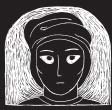
TITUBA
Slave of Salem Village’s Reverend Samuel Parris
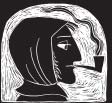
SARAH GOOD
Homeless beggar with two young children
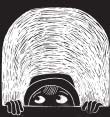
DORCAS GOOD
Sarah Good’s 4-year-old daughter
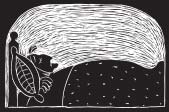
SARAH OSBORN
A bedridden old woman

MARTHA & GILES CORY
Woman who has an illegitimate son and her 80-year-old husband, a farmer
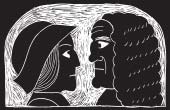
ELIZABETH & JOHN PROCTOR
A successful tavern keeper and his wife
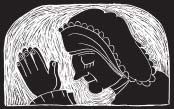
REBECCA NURSE
Well-loved 71-year-old grandmother
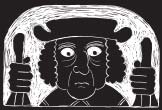
GEORGE JACOBS SR.
80-year-old farmer with rheumatism
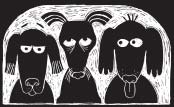
THREE DOGS
Accused of belonging to the Devil
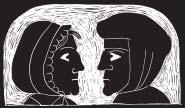
SARAH CLOYSE & MARY EASTY
Rebecca Nurse’s highly respectable sisters
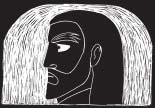
REVEREND GEORGE BURROUGHS
Former minister of Salem Village who lives in Wells, Maine
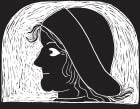
BRIDGET BISHOP
Tavern keeper from Salem Town, wears a red bodice, married 3 times
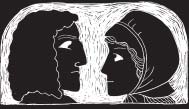
PHILIP & MARY ENGLISH
Extremely wealthy merchant and his pregnant wife

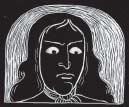
REVEREND SAMUEL PARRIS
Salem Village’s controversial minister
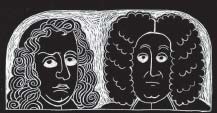
INCREASE & COTTON MATHER
Father and son ministers from Boston who write terrifying books about witchcraft
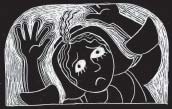
BETTY PARRIS
Afflicted accuser, 9-year-old daughter of Reverend Parris
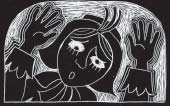
ABIGAIL WILLIAMS
Afflicted accuser, 11-year-old orphaned niece of Reverend Parris
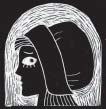
ANN PUTNAM JR.
Afflicted accuser, 12-year-old friend of Betty and Abigail
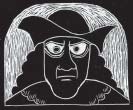
THOMAS PUTNAM
Accuser, strongest supporter of Reverend Samuel Parris, father of Ann Putnam Jr.
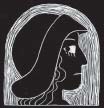
ELIZABETH HUBBARD
Afflicted accuser, 17-year-old niece of a physician who blames witches for the afflictions
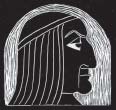
JOHN HATHORN
Interrogator during the preliminary witchcraft investigations
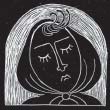
MARY WARREN
Afflicted accuser, 20-year-old servant of Elizabeth and John Proctor
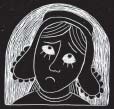
MARGARET JACOBS
Confessed witch who accused her grandfather, George Jacobs Sr.
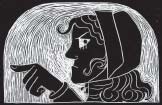
SUSANNA SHELDON
Afflicted accuser, 18-year-old refugee from the Indian wars
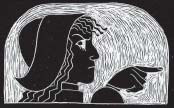
MERCY LEWIS
Afflicted accuser, 19-year-old servant of Ann Putnam Jr., and Indian attack survivor
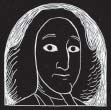
WILLIAM PHIPS
Royal Governor of Massachusetts
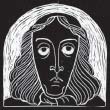
WILLIAM STOUGHTON
Chief Justice—Court of Oyer and Terminer
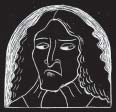
GEORGE CORWIN
High Sheriff of Essex County


WITCHES! For centuries, these horrid creatures have invaded the nightmares of superstitious souls around the world. Who was to blame for causing a terrible, unexplained pain or an untimely death? What if your farm animals fell into a fit and began to dance and roar, or your milk jug shattered before your eyes for no reason, or your child was born deformed? A wicked witch must have been casting spells to harm the innocent or to settle a score.
In European lore, witches consorted with spirits shaped like animals; vicious cats perhaps, or wild black hogs, or birds. Far more sinister was the idea that witches were the enemies of God—and the agents of Satan himself.
But the most frightening thing of all was this: Anyone could be a witch—your own mother or father, your best friend, your tiny baby brother, or even your dog. And you might never know who was in league with the Devil until it was too late.
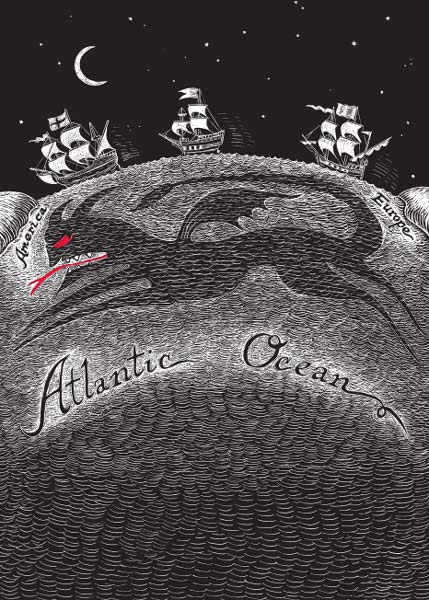
CHAPTER ONE
WHEREIN THE STAGE IS SET
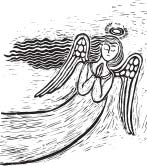
A cross the wide ocean they came, European emigrants looking for a new beginning on American shores. Many settled in New England, and among these were the Puritans, an English religious sect hoping to live a simple, God-fearing life and to create a heaven on earth. Even before their first ships set sail for the port of Salem Town, Massachusetts, in 1629, they had bucked the British tide for years in an effort to purify their church, banishing every trace of pomp and circumstance, from priestly vestments and music to incense and colorful stained glass windows.
Yet with all their fine intentions, the voyagers had brought along a stowaway from their former home—a terrifying, ancient idea fated to wreak havoc in their new land. For the Puritans believed in the existence of two entirely different worlds.
The first of these was the Natural World of human beings and everything else we can see or touch or feel. But rooted deep within the Puritans’ souls like some strange invasive weed lurked their belief in a second world, an Invisible World swarming with shadowy apparitions and unearthly phantoms of the air.
To be sure, many spirits in this hidden world were wondrous and benevolent. These winged seraphs were the angels of the Lord, who wished only to protect the living or offer advice in times of trouble. But the Invisible World was perilous too, boiling over with fire and brimstone and legions of evil, malicious creatures. So great was their power that they dared to do battle with God’s own angels—and the leader of them all was the Devil, a fallen angel himself!
The Devil’s malice was most fierce and most cunning when he waged his wicked wars upon God’s Children. To that end, he and his brutes, each one a fiend to the bone, formed a vicious army determined to destroy everything that was good in the Natural World. Among Satan’s soldiers were foul-smelling souls of the dead, horrid imps of darkness cleverly disguised as animals, and a ghastly knot of demonic fallen angels who denounced the word of God. And perhaps worst of all were the Devil’s witches, for they could hide in the land of mortals to cast their spells upon the innocent.
The Puritans were terrified by this Invisible World, whose hideous creatures were every bit as real to them as their own families, neighbors, and farm animals.
Puritan ministers preached that it was God Almighty who controlled these two worlds, and he was fearsome, vengeful, and easy to displease. Though pious Children of the Lord might be rewarded for good behavior, any sinners who did not obey his laws would be punished along with their entire communities. And here’s a surprise: Because God was all-powerful, even the Devil and the demons and the witches were under his control. Satan was truly an instrument of the Lord, for it was God himself who loosened the Devil’s chains and allowed this horrid creature to mete out God’s punishments.
The Puritans trusted that God did everything for a reason, so they took note of the things happening all around them in the belief that he was sending them signs. And as more and more Puritans spread outward from Salem Town, Massachusetts, to build new towns and farms on Indian territory in Maine and New Hampshire, they discovered a multitude of horrifying signs in America—if only anyone could figure out what they meant!





To the Puritans, every one of these signs seemed to signal God’s wrath.
And God’s wrath was exactly what was troubling Reverend Samuel Parris, the Puritan minister of little Salem Village.
It was early January 1692, and every member of the Parris household was shivering with cold. Each night the water inside their house would turn to solid ice as a shrieking wind howled on, whistling through cracks in their walls and floorboards. Reverend Parris was extremely upset, and there were three reasons why.
First was the firewood promised in his contract with the Salem Village church (there was hardly any left).
Second was his promised pay (there wasn’t any). A church committee of wealthy merchants and landholders in Salem Village disapproved of Reverend Parris and had just voted down a tax that was supposed to provide the money. Parris was enraged and began making fiery sermons, thundering from his pulpit that these “Wicked and Reprobate men” had joined forces with the Devil to destroy the Puritan religion and all that it stood for. “…Here are but two parties in the world,” Parris proclaimed, “the Lamb and his followers, and the dragon and his followers. Everyone is on one side or the other.”
But the third reason was by far the worst of all. Something was terribly wrong with the reverend’s nine-year-old daughter, Betty, and his orphaned eleven-year-old niece, Abigail Williams.
Normally, the Parris household would have been a hive of activity filled with eight hard-working people. Besides Parris, who was forever sitting beneath his map of the world to write yet another terrifying sermon, there was his good-hearted but somewhat frail wife, Elizabeth. There were the couple’s three children—Thomas, age 10; Betty; and little Susannah, 4 years old—and there was Parris’s niece, Abigail.
In addition, Parris owned two slaves—Tituba, an Arawak Indian woman who was kidnapped by a slave runner in South America when she was a young child, and her husband, John Indian, who had been married to Tituba for the past three years. Tituba had helped raise the Parris children ever since they were babies.
If all had been well during this unusually harsh winter, Betty and Abigail would have spent most of their time working together indoors. There was not much playtime in Salem Village; children were expected to help out the same as adults from the time they were about four or five years old. So when there were chores to do (and there were always chores to do—except on Sunday, when everyone was in church), the two girls might have knit some warm socks, boiled laundry in their enormous fireplace, swept ashes off the floors, ladled out porridge for breakfast, or helped make a wild venison pie and some sweet pudding for lunch in their big iron cooking pot. When all this work was done, they could card some wool or linen, twist its fibers into yarn on a wooden spindle, mend torn britches, or even upholster a chair. Of course, they would spend some time studying the Bible and saying their prayers. And if they ever took a break, they might sip some pear or apple cider from large pewter cups.
But that’s not what happened one freezing day in January 1692. Not at all. For as winter’s sleet and snow heaped higher and higher outside their door, Betty and Abigail began to twitch and choke and contort their bodies into strange abnormal shapes, crouch beneath the furniture, and speak in words that made no sense.
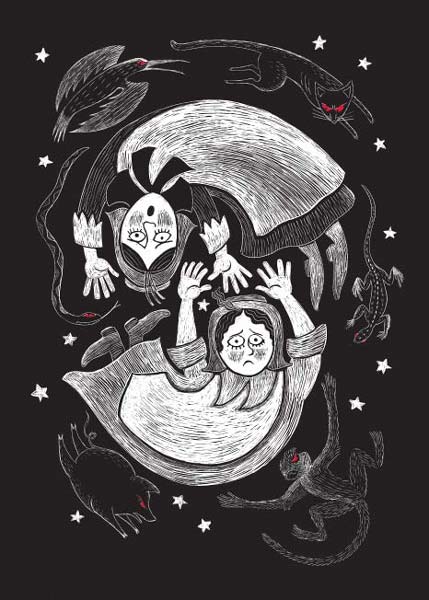
CHAPTER TWO
A DIRE DIAGNOSIS
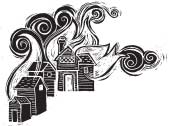
Days passed, but the two girls’ frightening symptoms only intensified, even though no one else in the household was getting sick. So Reverend Parris began to wonder. Maybe the children’s illness meant that God was sending him a sign. Maybe his congregation had committed some unforgivable sin and was being punished for its own good!
And did the reverend see a second sign of God’s wrath? Just one week after the awful fits first struck, and a mere 75 miles to the north, in York, Maine, the Abenaki Indians and their French allies attacked, leaving the town in flames. Even babies, women, and farm animals had been slaughtered. Puritans like Reverend Parris had long believed that Indians were devils and their shamans were witches. He may have wondered if God had unleashed the destroyers to teach his subjects a lesson.
Perhaps Parris had received a third sign as well, for early in February a homeless woman named Sarah Good came knocking at Parris’s door, begging for food for her baby and her four-year-old daughter, Dorcas. As Sarah Good turned to go, she muttered something under her breath. Was their gift too small? Were her words curses, the kind that caused crops to fail and livestock to die? The two afflicted girls soon seemed to get much worse.
Parris thought some more and began to wonder if he himself had been the sinner. Had he been lax in his duties as a minister or as a father? Parris prayed and fasted, and so did the rest of his family. He consulted with doctors and tried dosing the girls with every elixir he could find, from parsnip seeds in wine to smelling salts made from blood, ashes, and deer antlers. Nothing worked.
Then an elderly physician named William Griggs, who had lived in Salem Village for perhaps two years, examined Betty and Abigail and declared that they were most certainly “under an Evil Hand.” This was the worst of all possible news because it meant that the two girls were BEWITCHED!
Dr. Griggs had good reason to think so.
As early as the 1640s, about 50 years before Betty and Abigail first got sick, settlers in New England had begun to suffer from violent, life-threatening fits. Even farm animals wrestled with these convulsions; many that seemed healthy one day could wind up dead the next. But why? Doctors couldn’t find any rational explanation for the victims’ bizarre contortions. Nor could they explain people’s visions of dark apparitions and bright lights; their temporary paralysis; their blindness and deafness; or their claims that they were being pinched, choked, bitten, scratched, sat upon, or pricked with pins.
Before long, the Puritans began to look for answers in the Invisible World. Was this truly some new dread disease, or could the symptoms have been caused by witches? After all, the Devil’s witches could infiltrate the Natural World. If such an invasion had occurred in New England, perhaps these dreadful creatures were working their magic on mere mortals, casting spells and stabbing images of victims from afar to inflict pain, or staring at their prey with a poisonous Evil Eye until they died. Worse yet, witches could be corrupting the innocent, who might join league with the Devil by signing his book of laws just to ease their pain—or bargain away their own immortal souls in exchange for their heart’s desire.
That’s why in 1641, 1642, and 1655, new laws in Massachusetts and Connecticut proclaimed that witchcraft was a crime punishable by death. The first so-called witch to hang was a healer from Charlestown, Massachusetts, named Margaret Jones. It was said that her mere touch could cause violent pains, deafness, and vomiting, and that she had used witchcraft to kill animals. She was tried and hanged in 1648 during an epidemic of fits. But most cases like hers were thrown out of court for lack of solid evidence or because magistrates and ministers thought the witnesses were delusional or carried a grudge against the accused. Take the case of a New Haven, Connecticut, widow named Elizabeth Godman. In 1655, she was released from jail in spite of one woman’s claims that Godman was pinching her and causing dreadful fits that left her boiling hot, freezing cold, and shrieking in pain.







